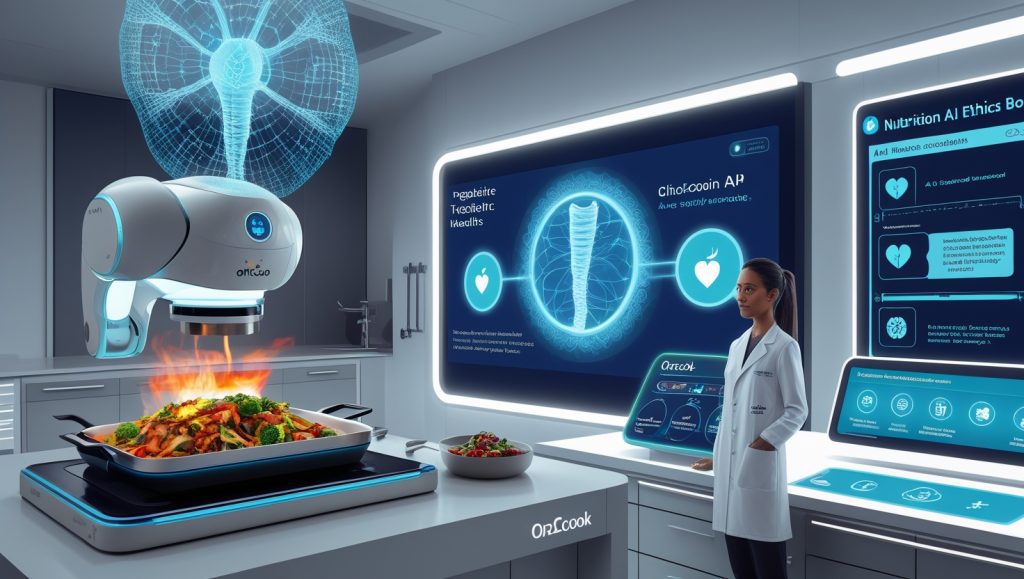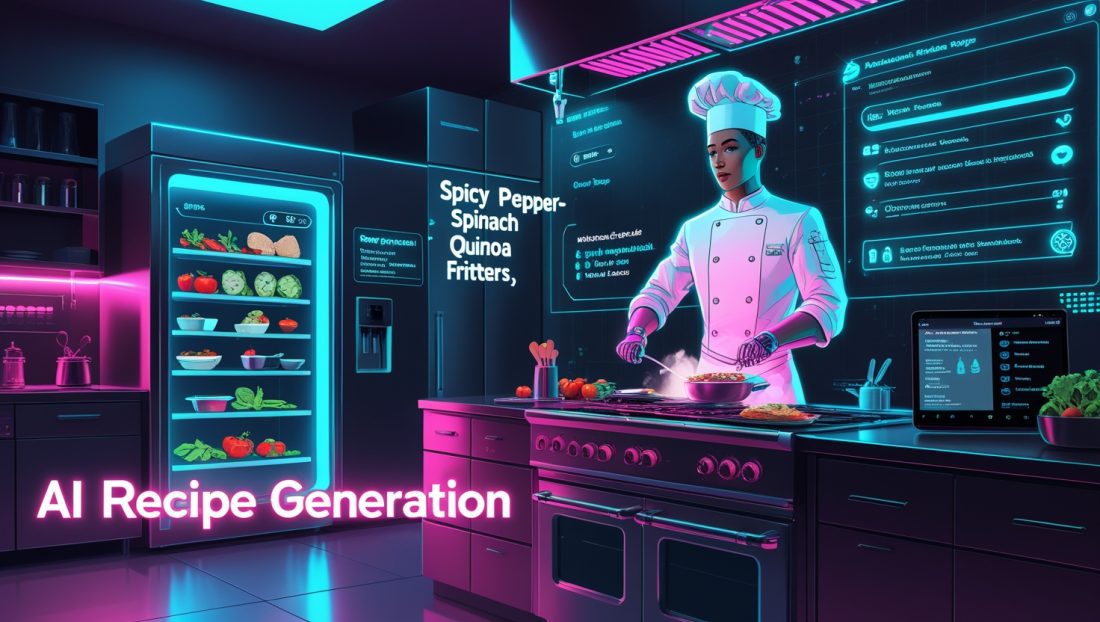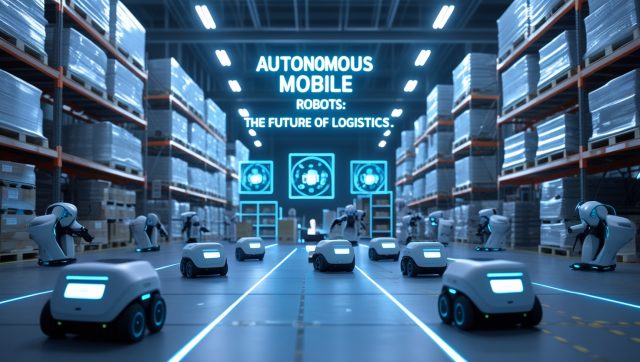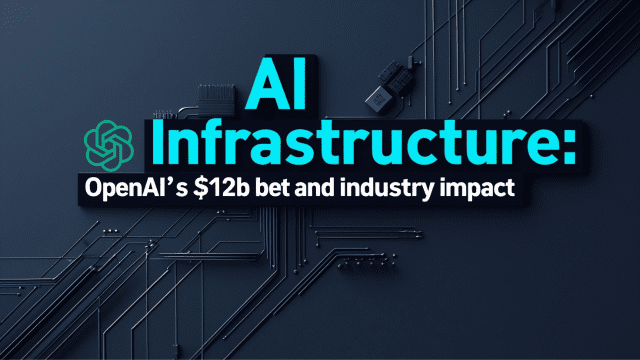The Empty Fridge Solution
Sarah stared into her refrigerator at 6 PM—half a bell pepper, wilting spinach, and leftover quinoa. Her AI-powered app suggested “Spicy Pepper-Spinach Quinoa Fritters,” transforming potential waste into dinner. This illustrates AI recipe generation’s core purpose: solving daily food dilemmas while restructuring industrial systems. Technologies like these are part of a broader wave of AI-driven automation, similar to how industrial AI agents are slashing energy costs in manufacturing by optimizing resource use in real time.
Industrial Drivers Accelerating Adoption
The AI foodtech market will reach $27.73 billion by 2029 (MarketsandMarkets, 2025). Beyond consumer convenience, three industrial imperatives fuel growth:
- Food waste reduction: McKinsey reports AI-driven meal personalization reduces household waste by 22% annually.
- Chronic disease management: Platforms like GlycoLeap use glucose-predicting algorithms for diabetic nutrition.
- Labor optimization: Commercially deployed systems like Sweetgreen’s Infinite Kitchen streamline operations with 30% fewer staff, mirroring efficiency gains seen in warehouse automation driven by collaborative robots.
Technical Architecture: From Data to Dishes
Consumer Applications
Platforms like DishGen and ChefGPT deploy hybrid models:
User Inputs → Predictive Algorithms → Custom Outputs
- Dietary restrictions
- Pantry ingredients → Flavor pairing models → Recipes + meal plans
- Cultural preferences → Waste logic → Automated shopping lists Example: FoodiePrep’s computer vision identifies ingredients via phone cameras, cross-referencing USDA databases for instant nutritional analysis. This kind of visual recognition technology is advancing rapidly, much like computer vision robotics that detect defects in industrial settings.
Industrial-Scale Implementations
- CPG Development: NotCo’s Giuseppe algorithm deconstructs dairy molecules, reconstructing plant-based alternatives matching sensory profiles.
- Supply Chain Integration: Choco’s Autopilot AI processes distributor orders, reducing manual entry by 70% while predicting shortages, a process akin to AI-driven supply chain management through agentic systems.
- Quality Control: OneThird’s infrared scanners predict produce shelf-life with 95% accuracy, preventing 150M kg of annual waste.
For deeper insights into how AI optimizes supply chains, explore FoodLogiQ’s approach to supply chain transparency, which complements these advancements.
Health and Sustainability Impacts
Precision Nutrition Advances
SNAQ’s clinical trials demonstrate 37% reduced blood sugar spikes through AI-designed meals for diabetics. The platform analyzes individual biomarkers to customize recipes, proving particularly effective for metabolic syndrome management. This precision mirrors how AI-driven predictive maintenance boosts factory efficiency by anticipating needs before they arise.
Waste Reduction Mechanisms
- Dynamic Inventory Systems: FoodiePrep’s virtual pantry tracks expiration dates, prioritizing perishables.
- Demand Forecasting: Winnow Solutions’ AI tools reduced food waste by 64% in IKEA kitchens through predictive recipe adjustments.
These efforts align with global sustainability goals, much like blockchain-verified reforestation to combat carbon credit fraud, which ensures transparency in environmental initiatives.
Cultural Accessibility
When celiac patient Miguel Rivera used DishGen, he discovered 27 gluten-free Latin American dishes. “It transformed restrictions into exploration,” he noted. Startups like Crooked Recipes now partner with indigenous communities to preserve culinary heritage through AI documentation. This cultural preservation parallels efforts in AI-assisted artifact recovery to save historical treasures.
Implementation Barriers and Solutions
Technical Challenges
- Data Integration: Johns Hopkins Hospital pilots EHR-recipe API integration for medically-tailored meals.
- Cultural Nuance: After early errors recommending beef pho to Hindu users, platforms now integrate religious dietary filters.
Commercial Hurdles
McDonald’s paused AI drive-thrus when noise interference caused 18% order errors. “Human-AI handoffs need refinement,” acknowledged CEO Chris Kempczinski during Q1 2025 earnings call. Solutions now include:
- Redundancy checks via kitchen display systems.
- Real-time staff override protocols.
For more on overcoming AI implementation challenges, check out IBM Food Trust’s blockchain solutions for supply chain reliability, which address similar operational hurdles.
Ethical Frameworks
The FDA’s draft “AI Nutrition Governance” (2026) addresses:
- Algorithmic bias: GAIN’s ethics board audits dietary recommendations.
- Data ownership: EU regulations require explicit consent for health data usage in recipe apps.
Future Development Pipeline

2026-2027 Roadmap
- DNA-Based Nutrition: Nestlé partners with Nutrigenomix for genetically personalized meal kits.
- Robot Kitchen Integration: On2Cook devices will auto-adjust cooking methods using DishGen API data.
Transformative Shifts
- Food-as-Medicine Validation: Mayo Clinic begins trials for AI-designed cardioprotective recipes in 2026.
- Blockchain Ingredient Tracking: IBM Food Trust enables recreation of regional dishes during shortages using local substitutes.
Industry Implementation Checklist
| Priority | Action Item | Real-World Example |
|---|---|---|
| Interoperability | Adopt open API standards | FoodLogiQ’s recipe data exchange |
| Sensory Accuracy | Invest in mouthfeel simulation | Climax Foods’ plant-based cheese texture algorithms |
| Ethical Compliance | Establish review boards | GAIN’s Nutrition AI Ethics Board |
FAQ: Addressing Critical Concerns
How secure is my dietary data in recipe apps?
FDA’s upcoming 2026 framework mandates end-to-end encryption and user-controlled data sharing. Platforms like Carbometer now offer offline mode.
Can AI accommodate severe allergies?
Yes. Allerguard’s cross-contamination algorithms achieve 99.97% accuracy through blockchain-tracked ingredient histories.
Do chefs become obsolete?
Unlikely. IBM’s 2024 Culinary Innovation Report shows 73% of high-end restaurants use AI for inventory management only, preserving creative roles.
What’s the cost for restaurants?
Systems like KitchenAI start at $199/month, with ROI in 4-6 months via waste reduction (NRA 2025 survey). Dr. Priya Kumar from MIT Food Tech Lab notes, “This technology scales culinary wisdom—preserving grandmothers’ recipes while making nutrition science accessible.”
The Strategic Imperative
AI recipe generation represents more than convenience—it’s becoming essential infrastructure for sustainable food systems. As climate change disrupts supply chains and chronic diseases escalate, these platforms evolve from kitchen assistants to public health tools. Ready to transform your food workflow?
- Subscribe to our Newsletter for regulatory updates


